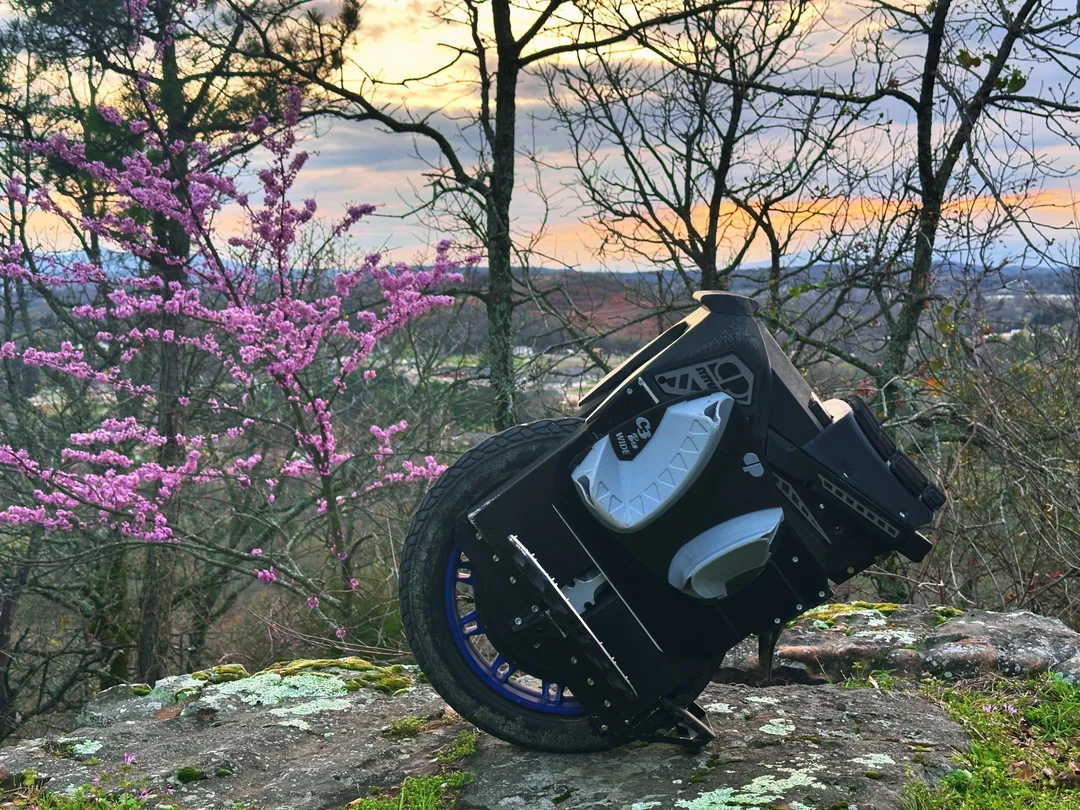Electric unicycles (EUCs) have surged in popularity as a fun, efficient, and environmentally friendly mode of transportation. One common question among enthusiasts and newcomers alike is whether these one-wheeled wonders have brakes.
Well, electric unicycles do not have traditional brakes like electric bikes or scooters. Instead, they utilize regenerative braking and rider control to slow down and stop.
Rider-controlled braking is the primary braking method of any Electric Unicycle. Riders control braking by leaning back, which signals the control board to reduce speed. Here’s how it works:
- Leaning Backward: Decelerates or stops the unicycle.
- Leaning Forward: Accelerates the EUC
- Maintaining Balance: Requires subtle body adjustments..
Under regenerative braking of electric unicycles, the motor runs in reverse to slow down the wheel, converting kinetic energy back into stored electrical energy. This method not only helps in braking but also extends the battery life by recharging it slightly during deceleration.
Why Do Electric Unicycles Lack Traditional Brakes?
The primary reason why EUCs don’t come with traditional brakes is that those would affect balancing.
Since Electric unicycles rely on Gyroscopic balance, it would mean that including traditional brakes would highly lead to shifting the rider’s weight forward, which would affect their effectiveness.
Leaning backward while riding an EUC is efficient enough for proper stopping power so
These are other minor reasons why it would be daunting to add traditional brakes to your EUC:
adding anything else that would probably affect balance would reduce safety standards.
- The design of EUCs emphasizes simplicity, with minimal moving parts. Traditional braking systems would add complexity, weight, and potential maintenance issues.
- Adding traditional brakes would increase the weight and size of the EUC, reducing portability and ease of use, which are key selling points for these trendy electric rides.
- Since riders don’t fall on their backs while braking, any additional braking power isn’t needed.
- Regenerative braking systems are generally more efficient for the size and function of EUCs, as they optimize battery usage and performance; thus, eliminating the need for any other braking systems.
Ideally, the absence of traditional brakes in electric unicycles is a deliberate design choice to enhance performance, efficiency, and user experience.
Crucial Points To Note While Braking Your EUC
While braking, modern electric unicycles regain any energy used by recharging the battery. Typically, the motor acts as the power generator here.
The same case applies while riding downhill. Regardless of whether you brake downhill to reduce your speed or not, any of the energy recovered gets used to keep your battery recharged.
Now, how about when riding at full acceleration? Well, the EUC sensors activate to tilt the deceleration backwards (braking) to let the rider know that they have hit the maximum speed and they have to learn backwards. This automatic tilting of the wheel when the rider hits the maximum speed is what we call the tilt back effect.
Lastly, the stopping distance depends on the riding conditions. For example, it will be shorter while riding on dry smooth tarmacked surfaces. It will be longer while riding on slippery surfaces such as snowy roads, and on rainy weather conditions.
Any Braking Differences Between High Torque and High Speed Motor EUCs?
Many EUC manufacturers nowadays bring their new lineups with two different versions: High Torque and High Speed.
The question of whether any is better for braking is a pertinent one and these are our findings based on research and experience:
- High-Torque motor electric unicycles brake seamlessly and with less effort needed.
- High-Speed EUCs brake relatively harder and if you are riding at full speed and would like to stop suddenly, you will have to lean back crazily, which can make you almost overpower the motor. This is not to say that they are unsafe, though.
Can I Brake While Seated On An EUC?
If yours is a seated EUC, it’s possible to want to know if it’s possible to brake while seated or keep on standing should the need to slow down or stop arise.
Well, the “how” depends on your experience and speed.
If you would like to brake hard, standing gives you more control and you will have to brake while standing unless you are a veteran when it comes to riding while seated.
If you are riding in slow mode, you can absolutely stop or slow down while seated. It’s actually more comfortable when your ride comes with powerpads.
If you aren’t used to riding while seated, the first few moments might feel awkward as you try to lean back and brake at your convenience.
